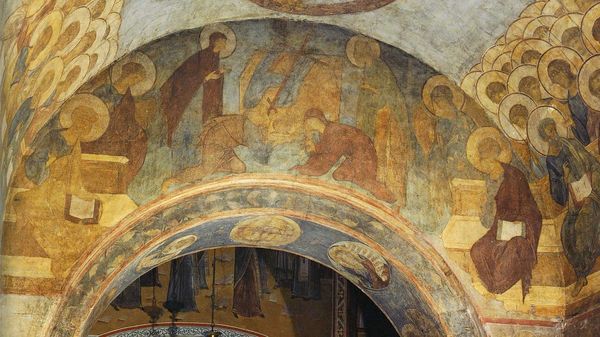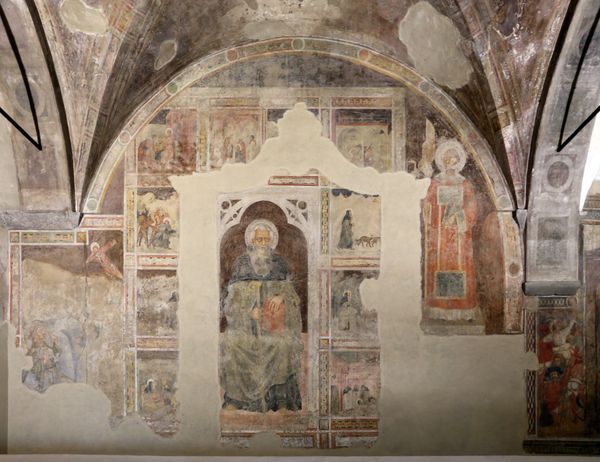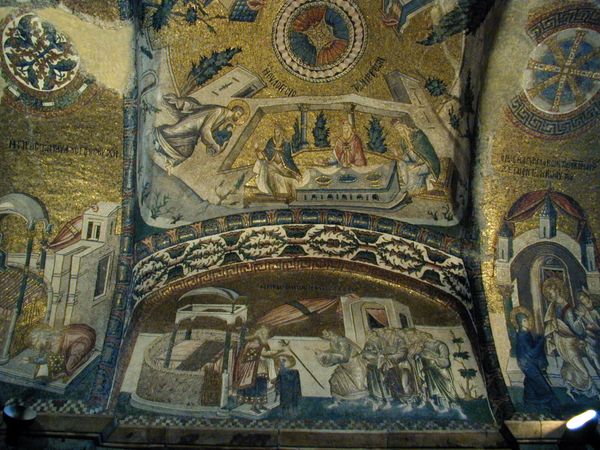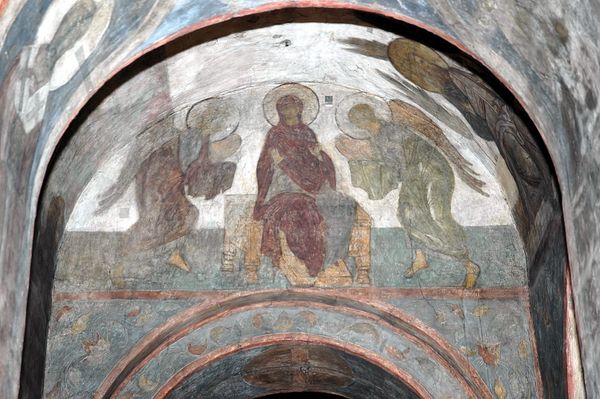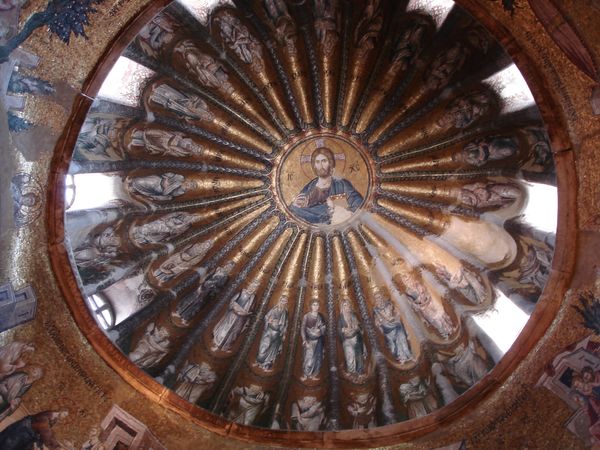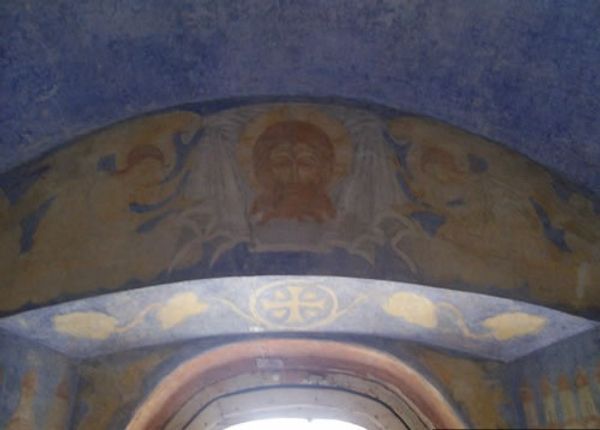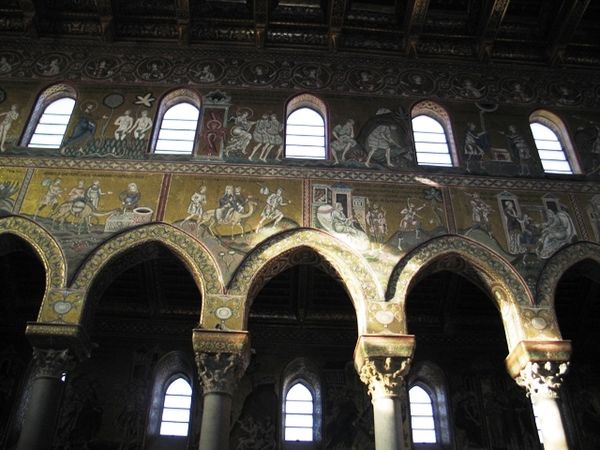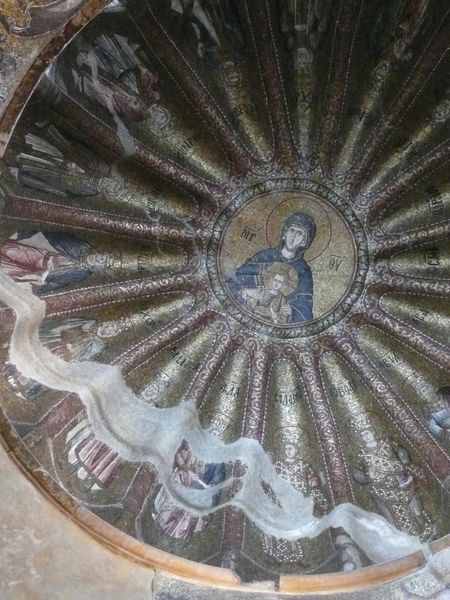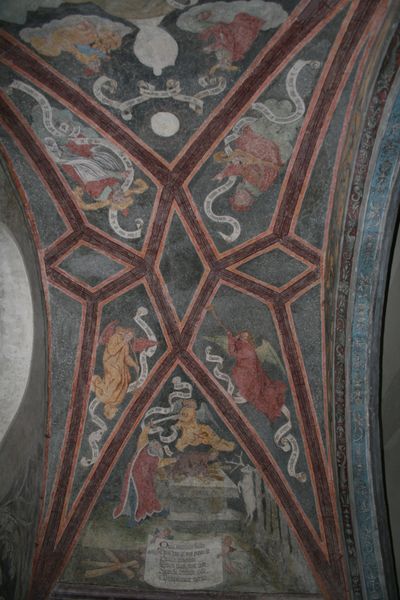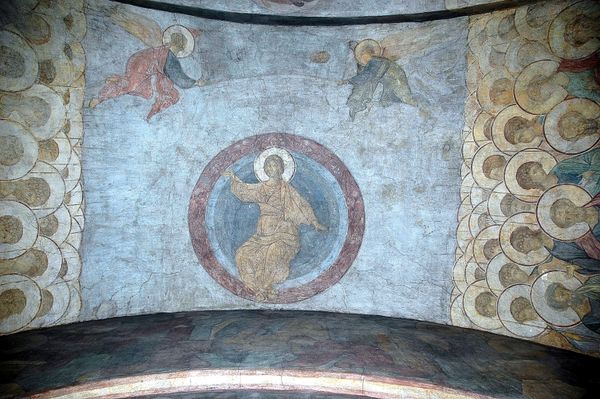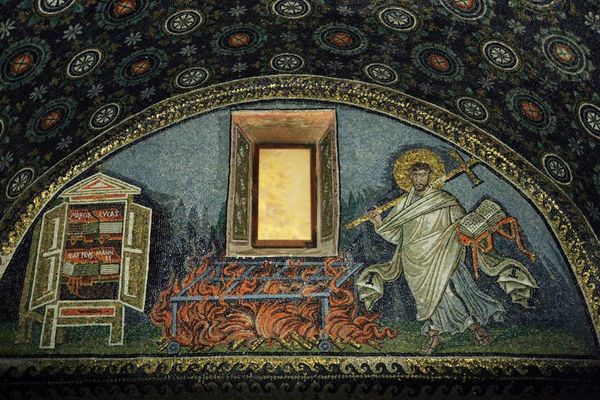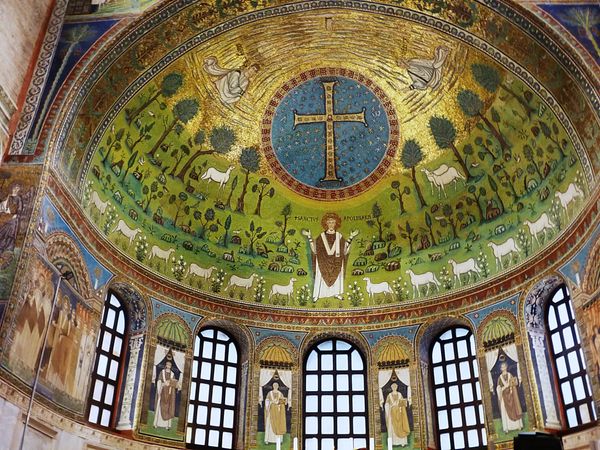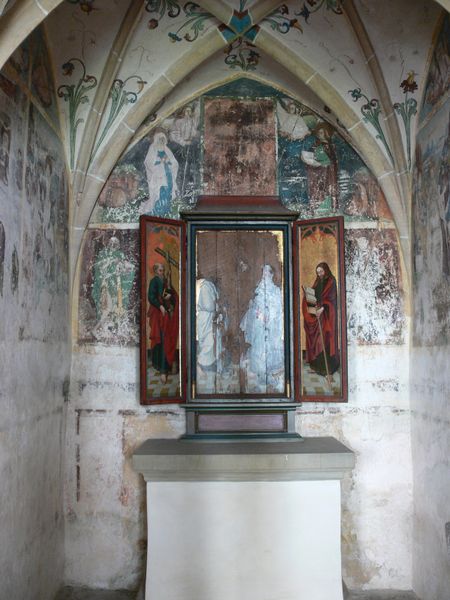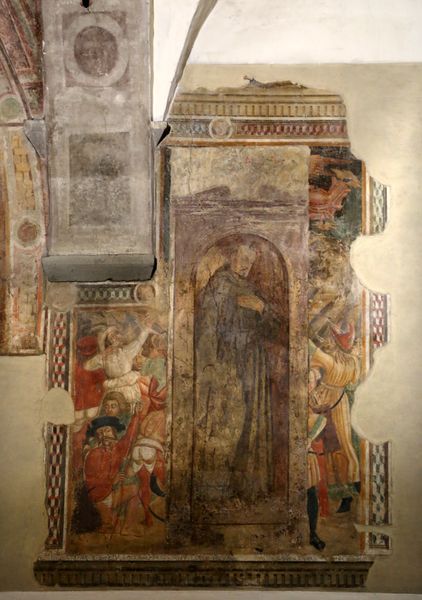
painting, fresco, architecture
#
byzantine-art
#
medieval
#
narrative-art
#
painting
#
figuration
#
fresco
#
history-painting
#
architecture
Copyright: Public domain
Curator: This is Andrei Rublev’s "The Last Judgement," a fresco adorning the Assumption Cathedral in Vladimir, dating back to 1408. Editor: The sheer scale of it! There is such a calm, almost pastel-like palette that covers the cathedral's domed ceiling, which is quite the opposite of what I’d expect for the end of days. Curator: The gentleness you perceive is deliberate. Rublev painted this during a time of intense Mongol-Tatar rule. "The Last Judgement" wasn't about instilling fear, but about offering hope for salvation and divine justice amid earthly suffering. Its creation came to symbolize Russian resilience, aligning the divine with national aspirations. Editor: It's interesting that you say "resilience" because I initially interpreted its composition as intentionally destabilizing. The placement of Christ at the very apex and the tiers of saints cascading downwards create a definite sense of instability. Curator: That tension echoes the socio-political environment. Despite Mongol domination, the Church and the icon painters were supported to stabilize political and social life. Rublev here merges the established Byzantine style with local sensibility to strengthen the morale. Editor: Yes, that blend is interesting, and the circular organization emphasizes continuity. The semi-circular gathering of haloed saints in those light colors contributes to the theme, framing a vision of salvation that embraces its observers. I'm also intrigued by the relative flattening of the figures; the modeling seems minimal. Curator: That’s characteristic of Byzantine art, prioritizing spiritual representation over naturalism, which then further minimizes the individualistic traits for communality. Editor: Does the specific architectural placement of the fresco play into its narrative function? Curator: Absolutely. Being within the Assumption Cathedral connects the divine judgment to the earthly lives of the congregants. Every prayer, every ritual is, in essence, preparation for this final reckoning. Editor: Looking at the layering of pale tones now and thinking of the fresco's intent, I see its gentle colors as almost ethereal, representing a higher, almost otherworldly plane of existence that exists as much as hope as a place. Curator: Indeed, its message then was deeply entwined with a yearning for deliverance. Editor: Well, considering the context of the time, it’s interesting to examine how such work can shift perspectives and give the observer a feeling of transcendence even within today's modern and rather secular gaze. Curator: Indeed. Art offers diverse possibilities.
Comments
No comments
Be the first to comment and join the conversation on the ultimate creative platform.
